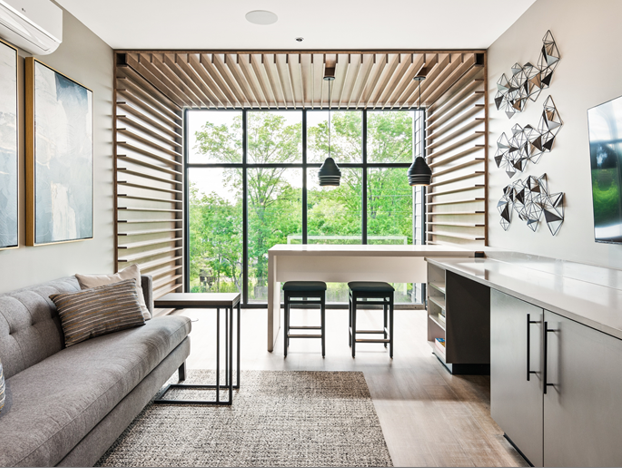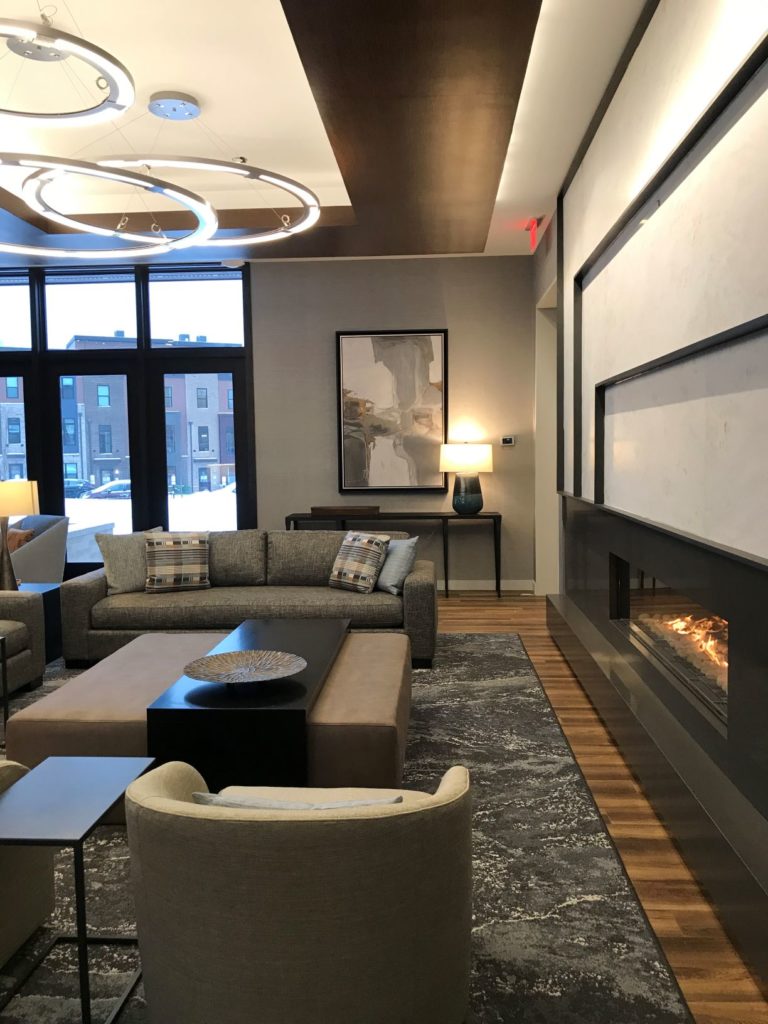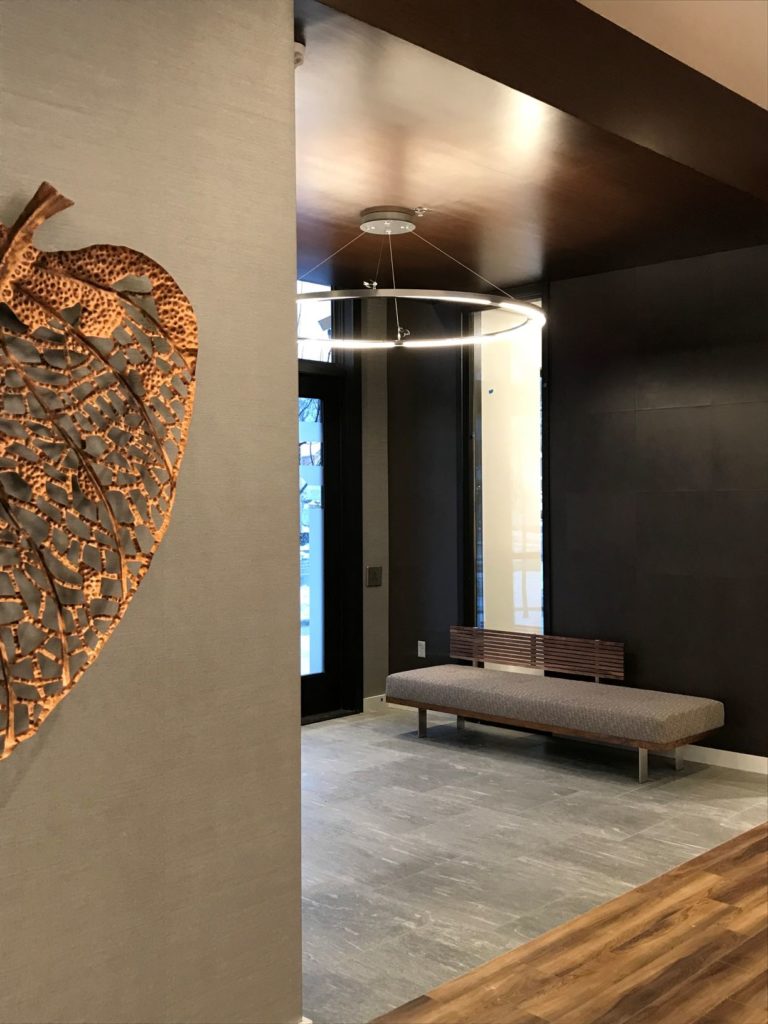By Sue Bady
As if daily life isn’t causing enough stress and anxiety, we’re in year two of the pandemic and still not out of the woods. With entire families living, working, and going to school in the same house, anything that soothes the senses is a welcome relief. It comes as no surprise, then, that there has been a recent movement toward minimalist interior spaces.
“The clean lines, perfect scale, and natural elements found in Japandi design, [for example], have that [calming] effect on people,” says Mary Cook, president of Mary Cook Associates, a Chicago interior design firm.
Doris Pearlman, owner of Possibilities for Design in Denver, adds, “Interior design has been moving in this direction for at least five years, and it seems we are just at the beginning of embracing the trend.”
Pearlman sees a similarity between Japandi and mid-century modern design: “The mid-century modern trend has that clean, classic aesthetic complemented by the warmth of natural stained wood.” She predicts an increased use of Asian elements in art, accessories, and accent pieces: “Mid-mod today, Japandi tomorrow!”
Lita Dirks, CEO and principal of Lita Dirks & Co., Greenwood Village, Colo., believes styles like Japandi are coming to the forefront because they offer more control over how we live. “Structured, straight lines are less prominent,” says Dirks. “The lines are softer — a sofa, a chair, a lamp. They have a bit of movement to them.”

Less clutter, more calm
Japandi, a fusion of Japanese and Scandinavian styles, utilizes such elements as light, pastel colors, and natural materials like oak and pine. Spaces are sparsely furnished and uncluttered, with one or two pieces of art as focal points and fixtures that provide a balance of light and shadow. In her residential work, Cook applies Japandi as well as wabi-sabi and biophilic design principles, which incorporate water, plants, and other aspects of nature into living spaces.
Another way to define Japandi is that it combines the hygge elements of warmth and coziness with wabi-sabi. This Japanese term combines wabi, which means the simple and natural beauty attained through subtle imperfections, and sabi, the beauty that comes with time or arrives as the product ages. Two examples are an asymmetrically shaped ceramic bowl or the patina on a rusted old metal wall.
Hygge, meanwhile, is a Danish/Norwegian word for a mood of coziness and conviviality that promotes feelings of wellbeing and contentment. The hygge lifestyle is one of deep pile rugs, throw pillows and blankets, candles, fireplaces, and lots and lots of wood. “It’s such a happy way to live,” says Lita Dirks, CEO and principal of Lita Dirks & Co., Greenwood Village, Colo. But home buyers who find hygge too casual might fall in love with Japandi, Dirks says.
Is minimalism on the move?
The popularity of high-quality, clean, simple, neutral background finishes has helped Millennials, the “me generation,” express themselves in unique ways, says Cook: “We have seen a lot of mixing and matching of periods and aesthetics combined with neutral backgrounds to create really cool looks.”
Agreeing that home buyers are thinking about how to define themselves as individuals through their living spaces, Dirks says that Japandi and other minimalist approaches “brings out the artisan” in those buyers, who can incorporate natural materials and (very selectively) add treasured photos or mementos to each space while simultaneously decluttering it.
“Japandi allows us to reflect,” she says. “It’s like being in a yoga pose. And cleaning out your space gives you more control over your life.” Decluttering, often associated nowadays with Japanese designer Marie Kondo, is not only beneficial in the physical sense of reclaiming space, but also enhances feelings of satisfaction and contentment.
Dirks sees the most pronounced influence of minimalism in the recent work done by her firm in amenity spaces. “However, it’s going to happen in homes too,” says Dirks. “Although open spaces encourage lots of interaction during gatherings, intimate spaces are also important, so great rooms are being broken down into zones. It’s about learning to screen spaces, even if it’s just an alcove around the corner from the great room, to transform them into more specialized areas for the family.”
Does this mean the U.S. is becoming a nation of minimalists? Cook is noncommittal, but says, “We’ve had plenty of time during this pandemic to think about what works in our homes and what doesn’t. We feel better when we are in nature and in sunshine, and many [of us] have been truly shaken by [COVID].”
Thus, Americans are looking to create a sanctuary out of their homes and yards — “places to rejuvenate and regenerate,” says Cook. “I believe we will be making decisions about design and improvements that recreate those feelings.”
Post by Sue Bady, self-proclaimed “armchair architect” and advocate of sustainability, new building technology and most of all, good design.
Featured image: Great room, image courtesy of Possibilities for Design



